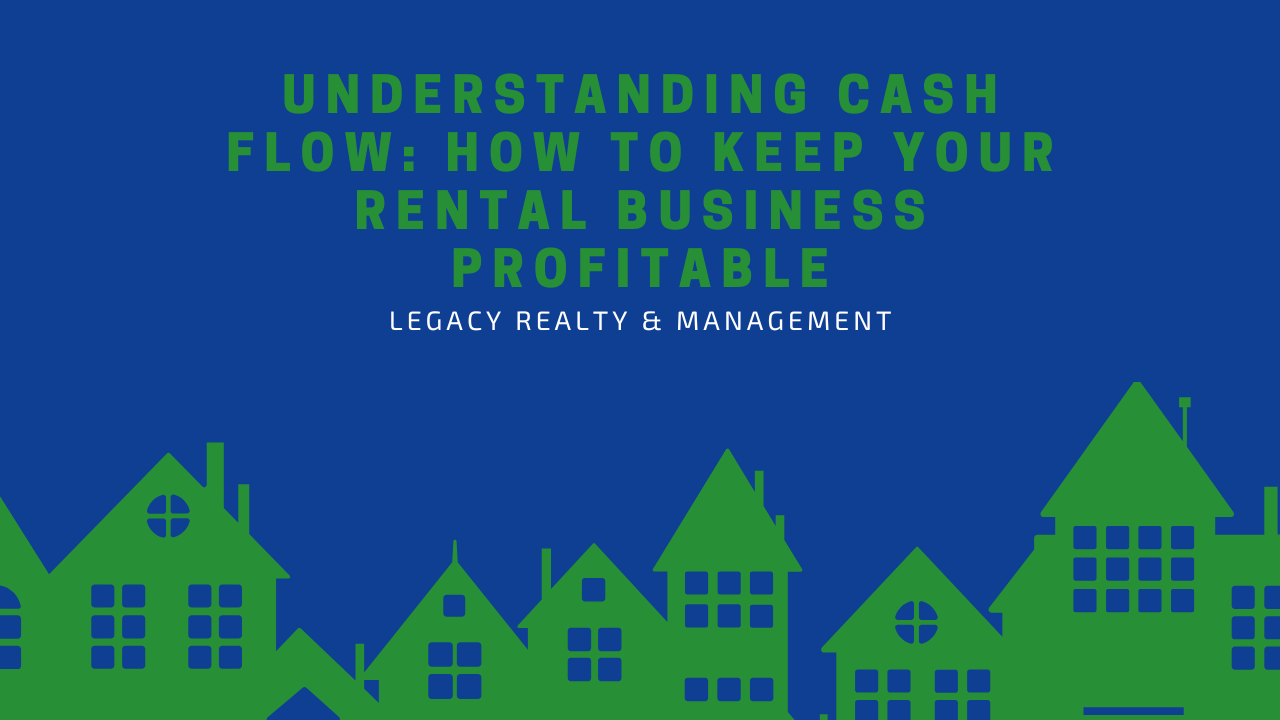
Key Takeaways
- Cash flow is essential: Positive cash flow, when rental income exceeds expenses, is the foundation of a successful rental property investment and should be your primary goal.
- Accurate analysis is key: Use the 1% rule, rent-to-expense ratio, and factor in renovation and market conditions to realistically estimate a property’s cash flow before purchasing.
- Location impacts returns: Focus on safe neighborhoods near job centers, quality schools, amenities, and areas with future development to attract reliable tenants and maximize long-term growth.
For most real estate investors, cash flow is the primary reason to invest in rental properties. Even with appreciation and tax benefits, steady income is what keeps an investment strong.
So, what exactly is cash flow, and how do you calculate it?
At Legacy Realty & Management, we help investors cut through the confusion. While it may seem complex, calculating cash flow is simple when you know what to look for. In this post, we’ll show you how.
Keep reading to learn more!
Contact Us Today
What Is Cash Flow in Real Estate?
Put simply, cash flow is the money left over after you subtract all rental property expenses from your rental income. It’s the net income you keep each month after covering things like maintenance, taxes, insurance, and management fees.
Cash Flow = Total Rental Income – Total Rental Expenses
If you earn more than you spend, the property is said to be cash flow positive, this means your investment is generating profit.
If expenses exceed income, the property has negative cash flow, which can quickly lead to financial stress. Naturally, your goal as an investor should be to buy properties that are cash flow positive.

While the concept is simple, calculating cash flow accurately, especially for a property you haven’t purchased yet, requires careful analysis. Overestimating rental income or underestimating expenses is a common and costly mistake.
Estimating Cash Flow Before You Buy
To analyze a property's potential cash flow, start by estimating its projected monthly rental income. A quick rule of thumb is the 1% Rule:
1% Rule = Monthly Rent should be at least 1% of the Purchase Price
For example, if a property costs $120,000, it should ideally rent for $1,200/month to meet the 1% rule. To get an accurate estimate, compare rents of similar homes in the same area. Use online listings, rental platforms, or ask a local property management company like Legacy Realty & Management for expert insights.
Rent-Readiness
Before estimating potential rental income, ask yourself: Is the property rent-ready, or will it need renovations first? If the property requires repairs or upgrades before it can be rented, those renovation costs effectively increase your total investment. That means your original rent projections, based only on the purchase price, may no longer be accurate.
Always assess the property's condition upfront. If it’s not rent-ready, make sure to factor renovation costs into your cash flow calculations to avoid underestimating your expenses and overvaluing the investment.
Contact Us Today
The Rent-to-Expense Ratio
Once you've estimated the potential rent, the next step is to calculate your expected expenses, and how they compare to your rental income.

This is where the rent-to-expense ratio comes in. It helps you evaluate whether a property is financially viable before you buy. Below are the typical expenses to account for, along with general benchmarks:
- Monthly mortgage payment + interest (based on loan terms).
- Property taxes: Check the local tax rate for that property type and location.
- Insurance: Varies by state and municipality; get a quote for the specific area.
- Repairs & Maintenance: Should not exceed 5–10% of annual rental income. Some investors use a rule of 1% of the property’s value annually.
- Property management fees: Typically 8–10% of monthly rent.
After plugging in these numbers, you’ll get a clearer picture of whether the property will produce positive cash flow. But don’t stop there, also consider whether the projected ROI aligns with your investment goals.
Most experienced investors aim for a minimum ROI of 8%, but your target should reflect your personal financial strategy.
Factors That Determine Rental Property Cash Flow
When searching for rental properties with strong cash flow potential, consider these key qualities of the location:
- Safety and Security: Neighborhoods with low crime rates attract reliable tenants. Avoid areas with high violent crime. Tenants should feel safe walking at night, supported by a visible community presence.
- Proximity to Job Centers: The property should be within a short commute to diverse employment hubs. Avoid areas dependent on a single industry, look for locations with a healthy, mixed economy.
- Quality School District: Highly-rated schools attract stable, long-term renters like families who tend to care for the property. Proximity to colleges also boosts rental demand.
- Bimodal Transport Access: Areas served by both road and rail offer greater convenience for residents and businesses. However, public transit should be reliable, not just present.
- Access to Amenities: Proximity to grocery stores, parks, entertainment venues, and recreational facilities enhances tenant appeal, often attracting higher-quality renters.
- Future Development Plans: Public or private investment in local infrastructure or projects can drive demand and increase property values over time.

Don’t forget to factor in potential property appreciation. Sometimes an undervalued property with modest cash flow can deliver significant returns through long-term value growth, making it a worthwhile investment even if initial cash flow margins are tight.
Bottom Line
Successful rental property investing hinges on understanding and accurately calculating cash flow.
By carefully evaluating rental income, expenses, property condition, and location factors, with expert guidance from Legacy Realty & Management, you can make smarter investment decisions that generate steady income and long-term growth.
Focus on cash flow positive properties that align with your financial goals, and you’ll build a strong, profitable real estate portfolio.
Contact us today for more information!
